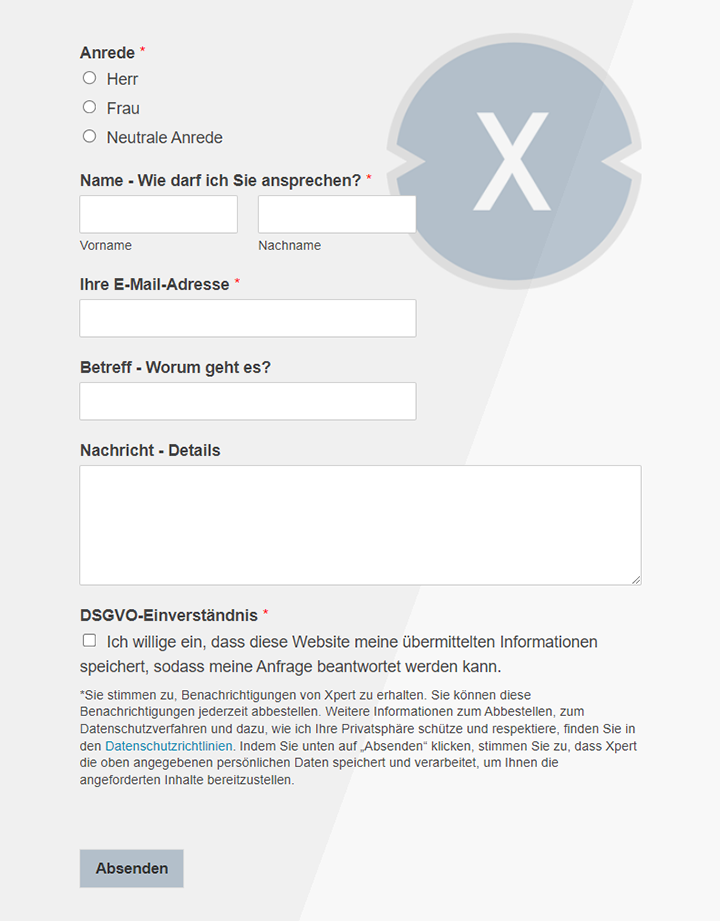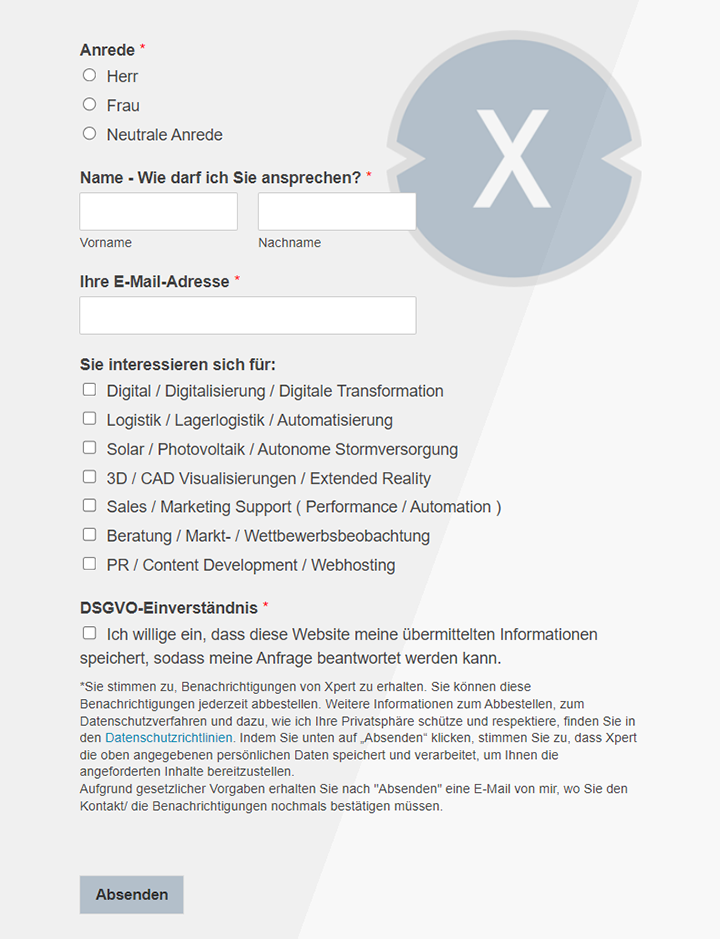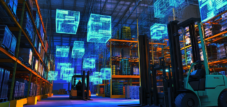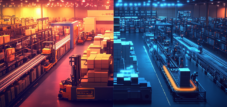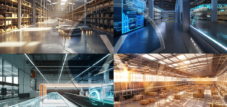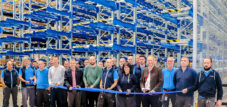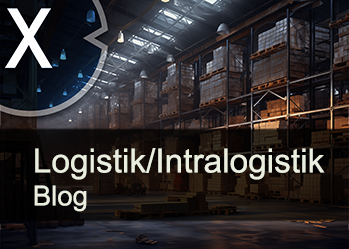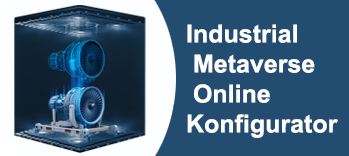Stock at the limit? Warehouse automation: warehouse optimization vs. retrofit – the right decision for your warehouse
Xpert pre-release
Language selection 📢
Published on: January 20, 2025 / Updated on: November 28, 2025 – Author: Konrad Wolfenstein
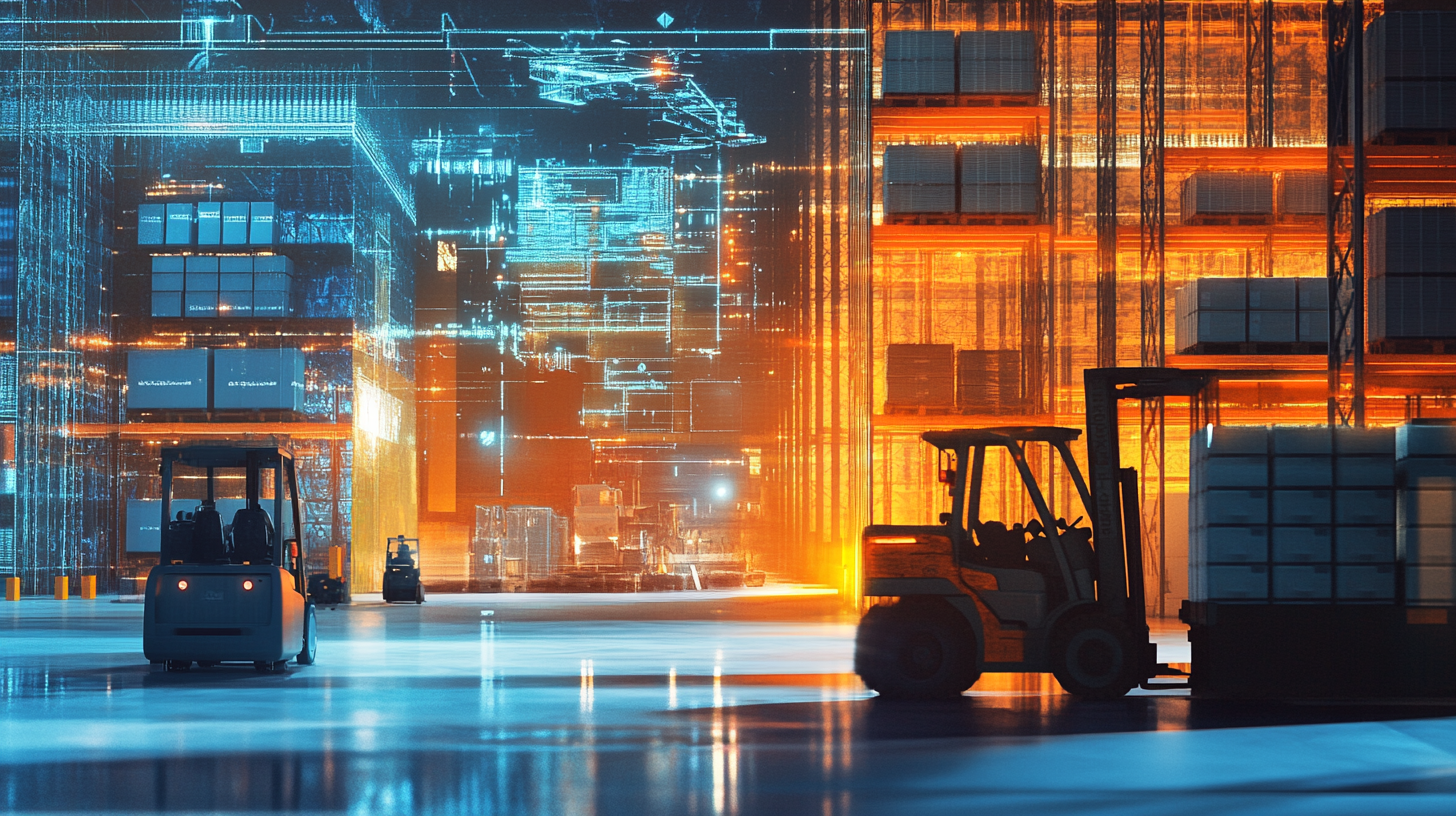
Stock at the limit? Warehouse automation: Warehouse optimization vs. retrofit – The right decision for your warehouse – Image: Xpert.Digital
Strategic decisions in logistics: How to find the ideal solution between optimization and retrofit
Future-oriented warehouse logistics: The central question between optimizing and modernizing
The decision between warehouse optimization and a retrofit presents companies with a significant strategic challenge. Both approaches have specific advantages and are suitable for different scenarios. In order to ensure the long-term efficiency, competitiveness and sustainability of a warehouse, a well-founded analysis is crucial. This article comprehensively examines the differences, advantages and areas of application of warehouse optimization and retrofitting, provides practical recommendations for action and adds exciting insights into modern warehouse logistics.
Warehouse optimization: increasing efficiency through improvements
Warehouse optimization relies on refining existing processes within the existing infrastructure. It is ideal when the basic storage structures and technical systems are still functional, but can be made more efficient through targeted adjustments. This is particularly the case with well-maintained systems that do not require extensive modernization.
Suitable for:
When does warehouse optimization make sense?
Warehouse optimization is particularly suitable in the following situations:
- Good condition of the infrastructure: The existing systems and facilities are technically intact and only require minor adjustments.
- Minimal Investment: No major technological upgrades are required.
- Increasing efficiency as a goal: The focus is on optimizing existing processes and thereby saving time, costs and resources.
- No serious disruptions: Operations run largely smoothly and optimization measures can be carried out during ongoing operations.
Measures for warehouse optimization
Warehouse optimization includes a variety of measures that can be adjusted as needed. The most common optimization approaches include:
1. Implement or improve a warehouse management system (WMS)
- A modern WMS offers improved inventory overviews, optimizes warehouse processes and increases transparency.
- Example: By automating warehouse movements, shortages can be reduced and inventories can be managed more efficiently.
2. Optimization of warehouse layout
- An intelligent redesign of the layout reduces walking distances, improves space utilization and makes picking easier.
- Practical: Frequently used items are placed closer to the picking zones.
3. Employee training
- Well-trained employees work more productively, make fewer mistakes and are more motivated.
- In addition: Managers should plan regular feedback rounds to identify optimization potential from the employees' perspective.
4. Integration of mobile technologies
- Mobile devices such as scanners or data glasses can simplify and accelerate work processes.
- Pros: Real-time information is available, minimizing errors and improving ergonomics.
5. Improve energy efficiency
- The use of energy-saving lighting or optimized heating and cooling systems helps reduce costs.
Retrofit: Modernization with foresight
A retrofit goes beyond pure optimization and includes the modernization of existing systems and the integration of new technologies. The aim is to increase performance, extend the service life of the systems and make the warehouse future-proof.
When is a retrofit necessary?
A retrofit makes particular sense if:
- Outdated systems: The technology is no longer up to date and causes frequent disruptions.
- High operating costs: Inefficient systems lead to excessive energy and maintenance costs.
- Spare parts problems: Spare parts for outdated components are difficult to obtain or are available at high cost.
- New technologies are required: automation or digitalization should be integrated.
- Security risks exist: The existing systems no longer meet the current standards.
Advantages of a retrofit
- Cost efficiency: Compared to a new building, a retrofit can save 30 to 70% of the costs.
- Life extension: A retrofit can extend the life of the systems by 10 to 15 years.
- Increased availability: By replacing critical components, system availability increases by over 20%.
- Increased performance: New technologies increase throughput by up to 30%.
- Sustainability: Modern components reduce energy consumption and can integrate sustainable energy sources such as solar energy.
- Technological integration: Technologies such as artificial intelligence (AI) or augmented reality (AR) promote efficiency and flexibility.
Exemplary retrofit measures
- Automation systems: Automated guided vehicle systems (AGVs) and robot order picking systems can be introduced.
- Security updates: Installing new security systems such as light curtains or emergency shutdowns.
- Energy optimization: replacing inefficient motors or cooling systems.
Decision-making process: warehouse optimization or retrofit?
The choice between warehouse optimization and retrofit requires a structured approach. Here are the essential steps:
- Condition Analysis: Conduct a comprehensive analysis of warehouse condition to identify weak points. Document the results and prioritize the necessary actions.
- Life cycle assessment: Analyze which phase of the life cycle the assets are in. Components at the end of their life cycle should preferably be modernized.
- 3. Needs analysis: Define the current and future requirements for the warehouse. Also take into account industry trends and strategic company goals.
- Cost-benefit calculation: Calculate the return on investment (ROI) for optimization and retrofit. Consider costs, savings and potential efficiencies.
- Minimizing business interruptions: Plan measures so that ongoing operations are disrupted as little as possible. Simulation tools can help evaluate different scenarios.
- . Employee training: Involve your employees in the process and ensure sufficient training. This promotes the acceptance and efficiency of the measures.
Suitable for:
The right choice for your company
The decision between warehouse optimization and retrofit is a question of long-term strategy and the current warehouse condition. Warehouse optimization is suitable when existing systems work well and only small adjustments are necessary. It is a cost-effective method to improve existing processes. A retrofit, on the other hand, offers a sustainable solution for outdated systems and enables the integration of modern technologies. With a well-founded analysis, clear objectives and strategic planning, companies can make the optimal decision to make their warehouse logistics future-proof and competitive.
LTW Solutions
LTW offers its customers not individual components, but integrated complete solutions. Consulting, planning, mechanical and electrotechnical components, control and automation technology, as well as software and service – everything is networked and precisely coordinated.
In-house production of key components is particularly advantageous. This allows for optimal control of quality, supply chains, and interfaces.
LTW stands for reliability, transparency, and collaborative partnership. Loyalty and honesty are firmly anchored in the company's philosophy – a handshake still means something here.
Suitable for:
Warehouse optimization versus retrofit: The right decision for your warehouse - detailed and background analysis
Warehouse strategy of the future: retrofit or optimization – which approach is right for your company?
The decision as to whether a warehouse optimization or a retrofit is the more effective solution for your warehouse depends on a variety of factors. Both approaches offer distinct advantages and are predestined for different scenarios. This comprehensive article highlights the essential aspects that should be taken into account when making decisions in order to ensure the long-term efficiency and competitiveness of your warehouse. It's about setting the course for future-oriented warehousing that meets both current and future requirements.
Suitable for:
- Warehouse automation globally: A comparison between the USA, China and South Korea - in the USA there are currently 80% manual warehouses!
- Warehouse automation worldwide: A comparison between Germany, Japan, France, Spain, Italy, Poland and the Czech Republic
Warehouse optimization: Increase the efficiency of what you already have
Warehouse optimization primarily focuses on improving already established processes and increasing efficiency within the existing infrastructure. It is an adequate option if the basic structure and mechanics of the warehouse are still in good condition and only selective adjustments or improvements are required. This is about exploiting the existing potential and refining processes without making fundamental changes.
When is warehouse optimization the right choice?
Warehouse optimization proves to be sufficient if:
- The existing storage infrastructure is in a solid condition. This implies that the basic systems and structures are functional and reliable.
- Only minor adaptations or improvements are required. So it's not about replacing outdated technology, but rather about fine-tuning existing processes.
- The main focus is on increasing the efficiency of current processes. The aim is to make optimal use of existing resources and minimize waste.
- No extensive technological upgrades are absolutely necessary. The focus is on process improvement, not on implementing completely new technologies.
Detailed measures for warehouse optimization
Warehouse optimization includes a wide range of measures aimed at maximizing the performance of the warehouse within the given framework conditions.
Implementation or improvement of the warehouse management system (LVS)
A modern and efficient LVS forms the backbone of any optimized warehousing. It enables precise inventory management, optimizes warehouse processes from storage to shipping and increases transparency across all warehouse activities. By digitally mapping the warehouse, processes can be streamlined, errors reduced and the ability to respond to changes in demand increased. A detailed analysis of the specific requirements of the warehouse is crucial in order to select the right WMS or to optimally configure the existing system and adapt it to current needs. This can include implementing additional modules for yard management or route planning, for example.
Optimization of warehouse layout and workflows
A well thought -out arrangement of the storage areas and shelf systems can significantly shorten the running paths of the employees and maximize the use of space. The analysis of article frequencies and sizes plays a central role here to optimally place the articles. The implementation of principles such as “Fast Moving Consumer Goods” (FMCG) in easily accessible areas or the formation of chaotic storage systems that are controlled by the LVS can significantly reduce the picking times. The design of ergonomic jobs also contributes to an increase in efficiency by reducing the burden on employees and thus increasing productivity.
Training and better management of employees
Well-trained and motivated employees are a crucial factor for efficient warehousing. Regular training on new processes, technologies and safety regulations is essential. A clear distribution of tasks and effective communication channels help to increase productivity and minimize error rates. The introduction of key performance indicators (KPIs) and feedback mechanisms can further promote employee motivation and contribute to continuous improvement in work performance. Additionally, implementing shift scheduling systems that optimally distribute workloads can increase efficiency.
Introduction of mobile devices or data glasses to support processes
The use of mobile data acquisition devices (MDE) or innovative technologies such as data glasses enables warehouse processes to be carried out faster and more accurately. Employees have real-time information about inventory levels, storage locations and order details right in front of them, reducing picking times and increasing accuracy. Data glasses also offer the advantage that your hands remain free, which is particularly advantageous for complex order picking tasks. The integration of these technologies into the LVS enables seamless data transfer and reduces administrative effort.
Further measures for warehouse optimization
Analysis and optimization of picking processes
Various picking strategies such as item-oriented, order-oriented or series-oriented picking can be implemented or optimized depending on needs and warehouse structure. The introduction of pick-by-voice or pick-by-light systems can also increase efficiency and accuracy.
Implementation of cross-docking
This method reduces the storage time of products by preparing incoming goods directly for shipping without going into intermediate storage.
Optimization of packaging processes
Choosing the right packaging materials and sizes and automating packaging processes can reduce costs and increase efficiency.
Introduction of lean management principles
Applying lean methods such as 5S or Kanban can help identify and eliminate waste and continually improve processes.
Use of data analysis to optimize processes
Evaluating warehouse data can provide valuable insights into inefficient processes and reveal potential for improvements. By analyzing throughput times, picking routes and error rates, targeted optimization measures can be derived.
Retrofit: Modernization for more performance and future security
A retrofit, on the other hand, involves the targeted modernization of existing systems and the integration of new technologies. The scope can range from the renewal of individual components to a comprehensive overhaul of the entire storage system. A retrofit becomes necessary or useful when the system is outdated, malfunctions occur repeatedly, spare parts are difficult to obtain or operating costs increase significantly due to inefficiencies. It is a strategic decision to ensure the long-term performance and competitiveness of the warehouse.
When is a retrofit the right choice?
A retrofit is necessary or useful if:
- The system is outdated and causes frequent malfunctions or downtimes. This indicates that the existing technology has reached its performance limit and reliability is no longer guaranteed.
- Spare parts are difficult to obtain or very expensive. This is often a sign of the end of the product life cycle of the installed components and can lead to significant maintenance costs.
- Operating costs rise sharply due to inefficiencies. Aging equipment often uses more energy and requires more maintenance, driving up operating costs.
- Security risks exist or new security standards must be met. A retrofit can help increase safety in the warehouse and meet legal requirements.
- A significant performance increase is required. When the existing system can no longer meet growing demands, a retrofit is often the only way to increase capacity and throughput.
- The integration of new technologies or automation solutions is sought. A retrofit makes it possible to integrate modern technologies such as robotics or artificial intelligence into the existing system to increase efficiency and flexibility.
The many advantages of a retrofit
A retrofit offers a number of significant advantages over a completely new building:
Cost efficiency
A retrofit is usually significantly more cost-effective than a completely new building and, according to estimates, can save 30 to 70 percent of the costs of a new system. This allows companies to achieve significant modernization with a lower financial outlay.
Extension of lifespan
By modernizing essential components, the lifespan of the system can be extended by an estimated 10 to 15 years. This not only saves resources, but also postpones the need for an expensive new purchase into the future.
Increased system availability
A targeted retrofit can often increase the availability of the system by more than 20 percent. By replacing vulnerable components and implementing more reliable technologies, downtime is minimized and productivity is maximized.
Increase performance and throughput
The use of new technologies as part of a retrofit can lead to increases in performance and throughput of 10 to 30 percent. This enables companies to handle growing order volumes and shorten delivery times.
Improved energy efficiency
Modern components and systems contribute significantly to improved energy efficiency. This not only reduces operating costs, but also contributes to environmental protection. The integration of intelligent control software can further optimize energy consumption.
Integration of sustainable energy sources
A retrofit can enable the integration of sustainable energy sources such as solar energy. This not only reduces energy costs in the long term, but also strengthens the company's image in terms of sustainability.
Integration of advanced technologies
A retrofit opens up the possibility of integrating modern technologies such as artificial intelligence (AI) or augmented reality (AR). For example, AI can be used to optimize warehouse processes or for predictive maintenance, while AR applications can support employees in picking and maintenance work.
Automation for more efficiency and flexibility
The integration of automation technologies such as automated guided vehicle systems (AGVs) or robot picking systems can significantly increase the efficiency and flexibility of the warehouse. These technologies enable 24/7 operations and reduce reliance on manual labor.
Phased implementation to minimize disruption
Companies can implement retrofits in individual phases to reduce interruptions to ongoing operations to a minimum and spread investment costs over a longer period of time. This allows for gradual modernization without having too much impact on day-to-day operations.
Contribution to sustainability
Modernizing systems through a retrofit can improve energy efficiency, reduce waste and therefore make a valuable contribution to a company's sustainability goals. This includes, for example, replacing old lighting systems with energy-efficient LEDs or optimizing heating and cooling systems.
Decision making: step by step to the optimal solution
The decision between warehouse optimization and a comprehensive retrofit requires careful analysis and weighing up a wide range of factors. The following steps will help you find the optimal solution for your company:
Comprehensive system analysis
A detailed examination of all components and parts of the bearing is essential in order to precisely determine the current condition and performance. This analysis helps to identify the areas with the greatest potential for improvement and to prioritize the necessary retrofit measures. The results of this analysis are documented in a clear form and serve as a solid basis for further decision-making. Based on the analysis results, concrete recommendations can be made as to which components should be modernized in order to achieve the desired increase in performance.
Assessment of the product life cycle of the installed components
It is crucial to determine which phase of the product life cycle the currently installed products, both hardware and software, are in. Components that are nearing the end of their lifespan are inherently more susceptible to failure, which can inevitably lead to increased downtime and associated higher maintenance costs. A detailed analysis of the service life of the individual components makes it possible to precisely determine the optimal time for modernization. The availability of spare parts and the long-term maintainability of the system should also be taken into account. It is advisable to clearly define the future requirements for the warehouse and check whether the existing components can continue to meet these requirements in the future. Experts recommend actively obtaining feedback from customers and employees in order to assess satisfaction with the existing components and to obtain valuable information about possible potential for improvement.
Analysis of current and future business needs
A thorough collection and analysis of the current business requirements for the warehouse is essential in order to precisely define the necessary functions and capacities. It is equally important to identify future trends and developments in your industry and their potential impact on your warehouse logistics at an early stage. Define your company's strategic goals and examine in detail how the warehouse can make a decisive contribution to achieving these goals. The creation of a comprehensive requirements analysis that describes all the necessary functions and capacities of the warehouse in detail forms the appropriate framework for the subsequent optimization or planned retrofit. It is important to validate this requirements analysis with key stakeholders to ensure that the documented requirements actually match needs and expectations.
Preparation of a detailed cost-benefit calculation
Create accurate and detailed cost estimates for various optimization and retrofit scenarios. Take into account not only the pure purchase costs, but also the costs for installation, ongoing operating costs and expenses for maintenance and repair. Determine the return on investment (ROI) for each scenario and compare the economic viability of the different options. Don’t forget to also factor in the potential cost savings from improved energy efficiency and reduced downtime. A comprehensive Total Cost of Ownership (TCO) analysis can provide valuable insights.
Consideration of the impact on ongoing operations
Carefully analyze the potential impact of the planned measures on ongoing operations. Plan implementation to reduce disruption to operations to an absolute minimum. The use of simulation tools can be helpful to model various retrofit scenarios and predict their effects on warehouse performance in advance. Also consider the necessary training for employees to ensure a smooth transition. Also assess the potential impact on delivery times and customer satisfaction. In many cases, a well-planned retrofit can even be carried out during ongoing operations without significantly disrupting daily operations. An impressive example of this is the modernization and expansion of the high-bay warehouse at KSB, which led to a considerable increase in performance of 25 percent and at the same time significantly reduced production and delivery times.
Risk assessment and management
Identify potential risks associated with both options and develop strategies to mitigate risks. This can include technical risks, logistical challenges or even resistance within the workforce.
Involvement of employees
Involve your employees in the decision-making process at an early stage. Their knowledge and experience are valuable and can help find the best solution and increase acceptance of change.
External expertise
If necessary, consult external experts to obtain a neutral and well-founded assessment. Consultants with experience in warehouse logistics can offer valuable support in analysis and planning.
The right choice for long-term success
The final decision between warehouse optimization and a comprehensive retrofit ultimately depends on the specific requirements, available budget and long-term goals of each company. Careful planning and detailed analysis of all relevant factors are crucial to making the right choice and ensuring sustainable success.
A retrofit offers the opportunity to significantly extend the service life of the system, sustainably increase performance, raise efficiency to a new level and seamlessly integrate innovative technologies. The initially higher investment costs can be quickly amortized through long-term savings and improved competitiveness. Warehouse optimization, on the other hand, is a cheaper and faster option, especially if the existing system is still in good condition and only minor adjustments or improvements are required. Through the targeted optimization of processes and workflows, the efficiency of the warehouse can be noticeably increased and operating costs can be significantly reduced.
It is essential to focus on the company's individual needs and strategic goals and to make the decision based on a well-founded and comprehensive analysis. A strategic approach to warehouse optimization and modernization is the key to ensuring long-term warehouse efficiency and competitiveness and successfully meeting the challenges of a constantly changing economy. Investing in a sustainable warehouse is an investment in the success of the entire company.
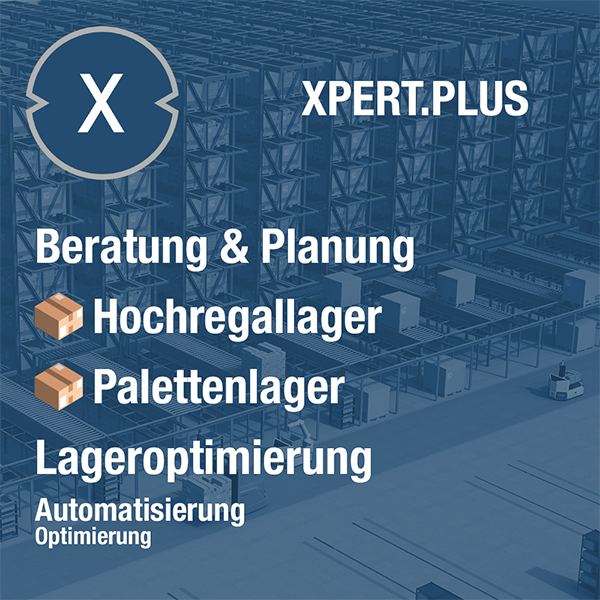
Xpert.Plus warehouse optimization - high-bay warehouses such as pallet warehouses consulting and planning
We are there for you - advice - planning - implementation - project management
☑️ SME support in strategy, consulting, planning and implementation
☑️ Creation or realignment of the digital strategy and digitalization
☑️ Expansion and optimization of international sales processes
☑️ Global & Digital B2B trading platforms
☑️ Pioneer Business Development
I would be happy to serve as your personal advisor.
You can contact me by filling out the contact form below or simply call me on +49 89 89 674 804 (Munich) .
I'm looking forward to our joint project.
Xpert.Digital - Konrad Wolfenstein
Xpert.Digital is a hub for industry with a focus on digitalization, mechanical engineering, logistics/intralogistics and photovoltaics.
With our 360° business development solution, we support well-known companies from new business to after sales.
Market intelligence, smarketing, marketing automation, content development, PR, mail campaigns, personalized social media and lead nurturing are part of our digital tools.
You can find out more at: www.xpert.digital - www.xpert.solar - www.xpert.plus





